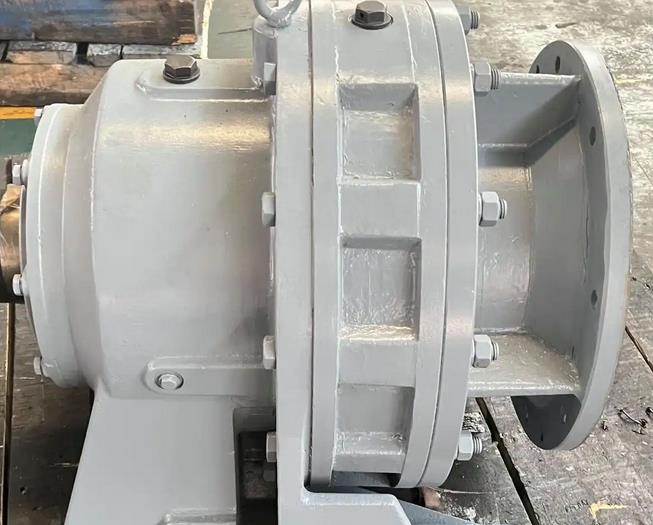Working principle and structural characteristics of planetary BWD4-35-11KW cycloidal pinwheel reducer
Working principleThe BWD4 reducer is based on the principle of planetary transmission with few tooth differences, and achieves deceleration through the meshing of cycloidal pin teeth. There is a double eccentric sleeve installed on its input shaft, which is misaligned by 180 °. The eccentric sleeve is equipped with two roller bearings, forming an H mechanism. The center holes of the two cycloid gears serve as the raceway for the eccentric sleeve arm bearing, which meshes with a set of annular arranged needle teeth on the needle gear, forming an internal meshing reduction mechanism with a tooth difference of one tooth. When the input shaft drives the eccentric sleeve to rotate once, the cycloid gear undergoes a planar motion with both revolution and rotation due to its characteristic tooth profile curve and limited by the needle teeth. The input shaft rotates once in the forward direction, the eccentric sleeve also rotates once, and the cycloidal gear rotates one tooth in the opposite direction to achieve deceleration. Later, through the W output mechanism, the low-speed rotational motion of the cycloidal gear is transmitted to the output shaft through the pin shaft, resulting in a lower output speed.

Structural characteristics
Compact and lightweight: The cycloidal pinwheel reducer has a compact structure, small volume, and light weight. Compared with ordinary cylindrical gear reducers, the volume can be reduced by 1/2-2/3, making it easy to install and use.
Smooth transmission: During operation, there are multiple pairs of teeth in contact, with a high degree of overlap, smooth operation, strong overload capacity, and low vibration and noise.
Easy disassembly and assembly: This reducer is easy to disassemble and assemble, easy to maintain, and convenient for users to carry out daily maintenance and upkeep.

